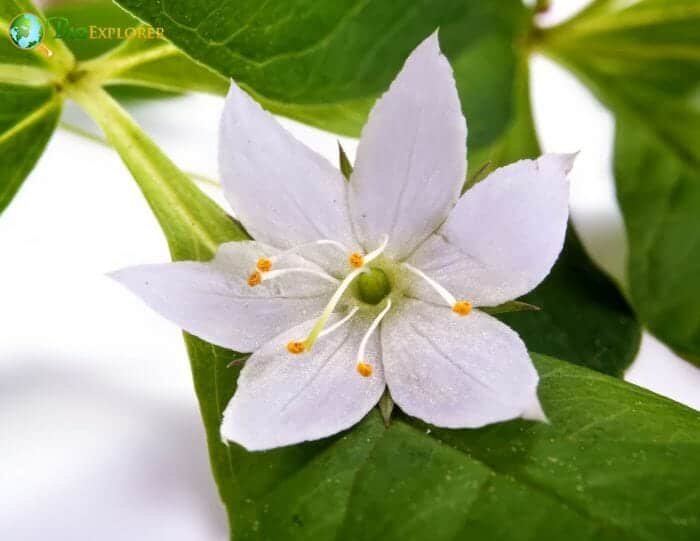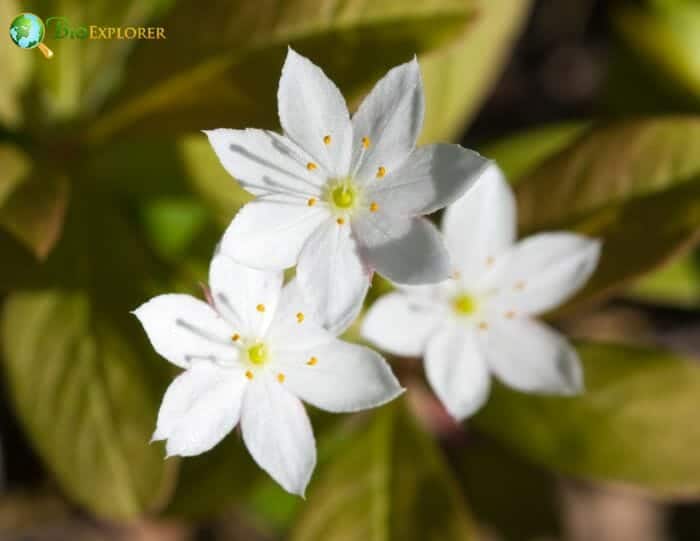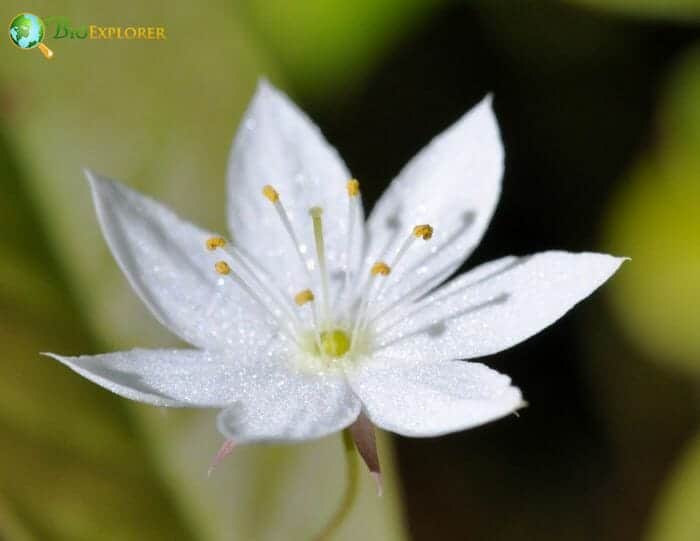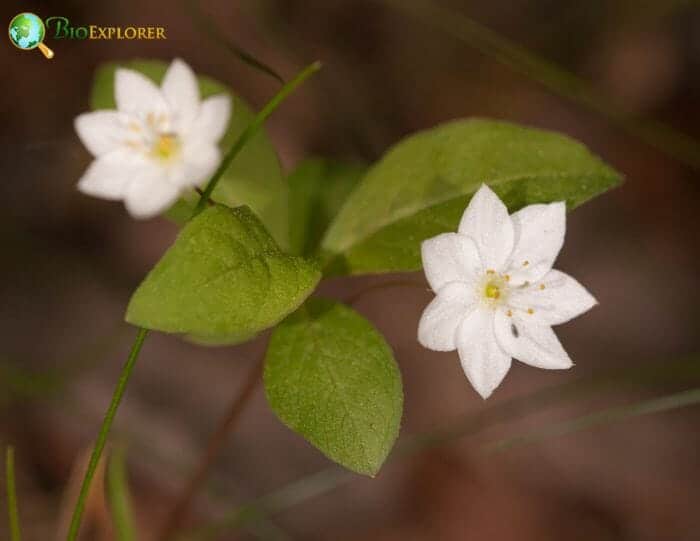
| Plantae | Ericales | Primulaceae | Trientalis | Trientalis borealis |
- Plant Type: Perennial herb.
- Common Names: Northern Starflower, Maystar.
- Color: White
- Flower Dimensions: 0.22- 0.31 inches.
- Flowering Season: Summer


Trientalis borealis is a perennial herb of the Primrose family. It grows in the moist shade of woods and thickets of Nova Scotia to Minnesota and the Mountains of Virginia.
- Most leaves of the Northern Starflower plants are whorled. Others alternate on the proximal stem. The leaves are unequal in size.
- The stems of the Trientalis borealis are erect and slender. Its average height is 4 inches.
- The rootstocks of the Northern Sunflower are long, horizontal, and slender.
- The flowers of the Northern Starflower are solitary. They are star-like and situated on slender stems above the whorl of leaves.
- The plants usually have 1 to 3 flowers. The white flowers usually have 7 petals.
Interesting Facts about Northern Starflower

- In the early 20thcentury, the Northern Starflowers were sometimes classified as Trientalis americana[1]. This species became a synonym of the Trientalis borealis. Both were placed under the Primulaceae family.
- Trientialisis a Latin word meaning “one-third of a foot“. This refers to the average height of the Trientialis plant. The species name “borealis” means “north“.
- The flowers of the Northern Starflower[2] will bloom for a couple of weeks as long as the weather does not get too warm.
- North America recognizes three species and 1 subspecies of Trientalis. However, only the species Trientalis americana[3] is found in eastern North America.
- Trientalis borealis[4] is imperiled in Georgia. The State of Georgia listed T. borealis as endangered. The Starflower[5] is also threatened in Illinois. An article stated that climate change might affect the species’ population.


Trientalis borealis (synonym Lysimachia borealis), the star-shaped flower, is a perennial wild flowering plant native to the North American forests that bloom from May to June. The genus Trientalis is derived from a Latin word that means a third of a foot.
It is an indication of the height of the plant. The starflower, which has been classified in the Primulaceae (primrose) family, is apparently now incorporated into other genera of the genus Lysimachia and received a new species name: Lysimachia borealis. This change is the result of new analyzes of morphological and molecular data.
The genus Lysimachia comprises around 150 species[1] of herbaceous and perennial shrubs that grow mainly in meadows and moist forests in the subtropics.
The species name (Borealis) refers to the north. However, this wildflower also grows in the Midwest and high altitudes of the southern Appalachians. Starflowers have trailing rhizomes with upright 8-inch stems.
Each stem has a whorl of 5 to 9 lance-shaped leaves at its end, with 1 or 2 white, green, or brown flowers on smaller stems extending from the center of the whorl. The flowers are approximately 15mm in diameter and consist of 5 to 9 petals that form a star shape.
















